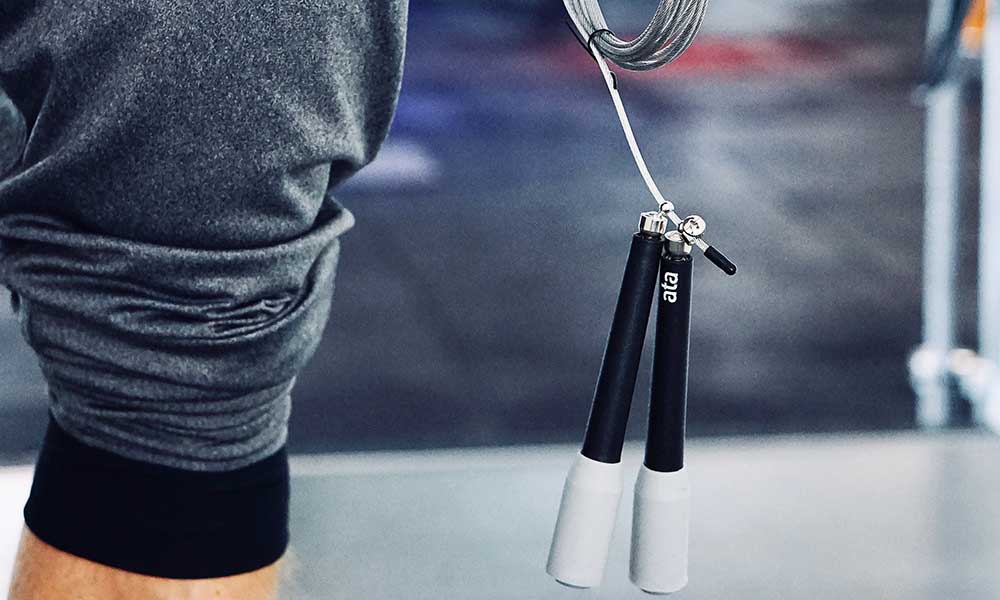Your local high school track or even at the university or college campus can be great places to run. Many tracks will have open hours to the public where you can come get some exercise on flat, often rubbery, terrain which is easier on your joints.
And the best part is that on a track, you know the distance of each lap, so you just need to do a little bit of math to know how many laps you need to run. The rest is counting.
So what is that distance?
Generally speaking, four laps around a standard competitive track is equivalent to a mile. One lap on the inside lane—lane 1—of a standard track is 400 meters. A mile is 1609 meters long.
Not all lanes on the track are the same distance. With each lane you move out from the center, the lap distance gets approximately 7.5 meters longer. If you decide to run in the outside lanes, the same four laps will be a little bit longer than a mile.
Exceptions to the rule
Not all tracks are built to the standard distances. You’ll want to check the track you plan to run to verify exactly what the lap distance is. On a currently competitive track—meaning a track that is regularly hosting track and field competitions—the track distance should be the standard.
On competitive tracks built prior to 1979 the lap distance is actually 440 yards which is exactly a quarter mile or 402 meters. For many amateur runners, just hoping to get a workout in, this is a negligible amount. For elite or professional runners, each millimeter counts.
Other tracks, maybe at your local gym or recreational center, may be built to the size of the facility rather than for track and field competition. That means the track distances can vary greatly. Most, however, have markers to tell you the distance of each lap so you can still get your workout in even if it means more laps to complete each mile.
Benefits of running on a track
Running on a track has certain benefits that you don’t get when you’re running on the streets or on trails.
Softer Surface
Many tracks are finished in a rubberized surface which gives each step a bit more spring that you’re typically used to. This can help you run faster while not having to exert as much effort.
In addition, the spongier surface is easier for your joints as they don’t have to provide as much shock absorption as running on asphalt or cement. You will notice less soreness after running on a track and have a speedier recovery.
Fixed distance
Whether you’re on a standard track or a shorter track at your gym, sometimes it’s just nice to have a goal in mind and be able to mindlessly run it. Say you want to run 3 miles without having to plan a route, all you have to do is run 12 laps and be done with it. Just don’t lose count along the way!
If you are interval training or sprint training, this fixed distance can be incredibly helpful for setting benchmarks. One technique is to sprint the straights and recover via jogging or walking on the corners. This is helpful in that you don’t have to be looking at your watch or phone to time it, you can just focus on the physical distances.
Level surface
When you’re doing speed work for running, it’s hard to do that in a place that has uneven terrain or in a hilly location.
Your local track offers a great, flat surface with level footing so you can run without fear of twisting your ankle on a rock or a short curb and focus on your form as you run your fastest.
Track etiquette
The track, like a swimming pool or your local gym, has a certain etiquette. These written or unwritten rules ensure that everyone can safely get the most out of their workouts. Always check for and adhere to posted regulations and open hours at the track you’re running on. And, when in doubt, ask a fellow runner to help you.
Here are some of the basic unwritten rules.
Always turn left
Running on the track is typically done in a counter-clockwise direction, meaning you should always be turning left around the bends. Running in the direction of traffic will help avoid collisions or interruptions in your workout, especially on busy days.
If you happen to be the only one out there, feel free to express yourself and run in whatever direction the wind takes you. Otherwise, turn left.
Pay attention
If you are on the track with others, wearing headphones isn’t recommended as you may not be aware of someone else needing to pass or trying to get your attention.
When people are running on the track with you, you may hear someone say, “On your left” or “Track 1.” Those both mean that someone is trying to pass you. If you are already in the first lane, you’ll want to move right to the next lane after taking a quick glance to your right to make sure the lane is clear and you’re not impeding another runner. If you’re in the next lane already, someone may just be warning you they’re passing on your left so you don’t move into them, but it’s safe to continue where you’re at.
If you happen to have the track to yourself, feel free to blast your music on your headphones and get in the zone to your favorite motivational tracks.
Lane one is reserved for the fastest runners
If you’re warming up, cooling down, or generally a slower runner, you’ll want to leave the first lane open especially if you’re on the track with other people. The fastest runners will be using the innermost lane.
Also, if you’re on the track while the school team is practicing, not all lanes will be open to the public. Some lanes will be reserved for the team’s athletes and you’ll want to respect that and stick to the outside lanes.
Closing Thoughts
The track is a great place to workout, run, and hit your exercise goals. Just remember to follow the rules of your local track so that everyone has a great time. Happy Running!







